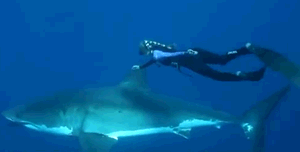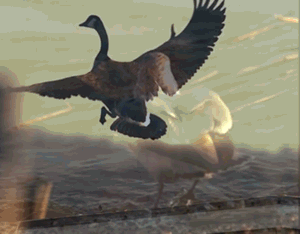
Early Humans watched in amazement how birds could fly. Early attempts to mimic birds proved disastrous. A knowledge of physics and biology should have shown that human powered flight was near enough impossible. Only in the 20th century were people able to build machines, planes, that can fly through the air.
If a bird is not generating lift by flapping it's wings, that is, its soaring, it flies in much the same way as a glider plane flies. The air travels faster above the bird's wing than it does below, and this makes the pressure lower above the wing.

Birds use their wings to generate two forces, lift and thrust, with which they overcome gravity and drag. There are four forces acting on a bird in flight, lift, thrust, drag and gravity (weight).
These four forces act in pairs, as shown on the right.
If a bird is to fly it must overcome drag and weight by generating a greater force of thrust and lift.
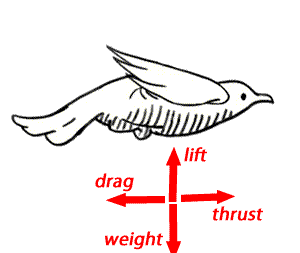
A little physics is required here to understand how the bird generates lift from a standing start. We need to be familiar with forces, especially :
- Newton's Third Law of Motion - which states that every action has an equal and opposite reaction.
So, when the bird flaps its wings downwards to lift off, the force of the air been pushed down generates an equal and opposite force that pushes the bird skyward, as shown on the right.
- F = ma ( the size of the force, in Newtons, acting on an object is equal to the mass(Kg) of the object multiplied by the acceleration of the object in m/s/s/.
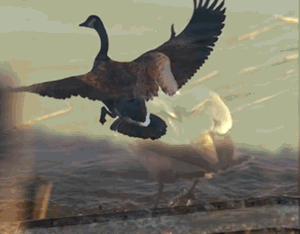
Birds have a lot of adaptations for flight, not just wings. Their bones are strong but hollow and light. They have light structures on their wings, called feathers, which catch the air. Their lungs are extra efficient at extracting oxygen from the air, more so than the lungs of Humans.
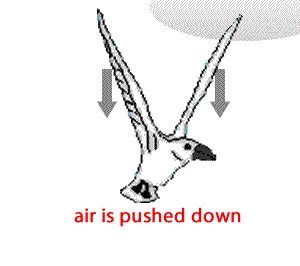
2) The formula for force is given below
F = ma where "m" is the mass and "a" is its acceleration.
Which of the following results in a great deal of force being generated by a bird's wing.
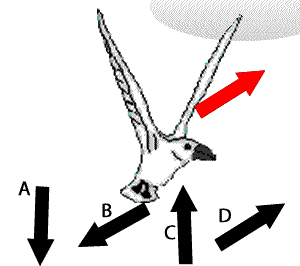

5) Using the formula for force (F=ma) calculate the force, in Newtons, generated by the wings of an albatross if 0.050 Kg of air is pushed downwards with an acceleration of 2.4 m/s/s.
Solution

6) Look at a jellyfish propelling itself through the water.
a)
What are the similarities between the bird and the jellyfish propulsion systems?
b) Air is less dense than water and so it would be reasonable to assume that it is easier for a bird to fly through the air than it is for a jellyfish to swim through water, however, it is harder for the bird to stay in the air and generate thrust than it is for the jellyfish to move through the water. Explain why?
Solution
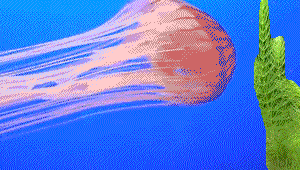

8) Explain how this swimmer and shark are able to propel themselves through the water.
9) The swimmer looks like she is moving her flippers through a greater distance than the shark's tail and yet both are moving at the same speed. Explain why.
Solution
